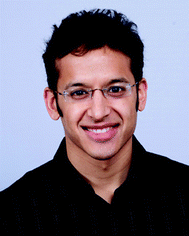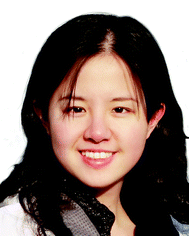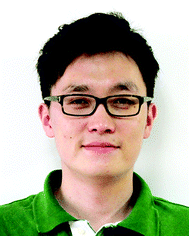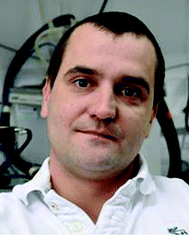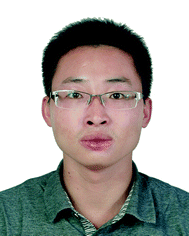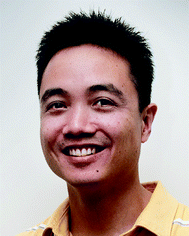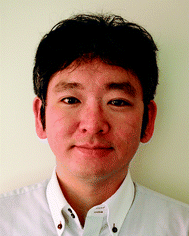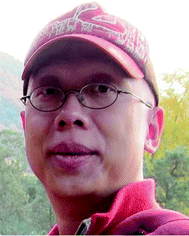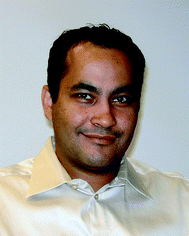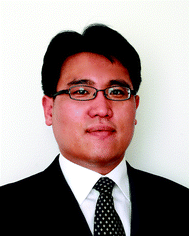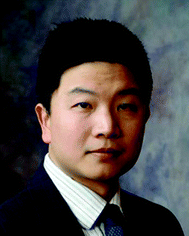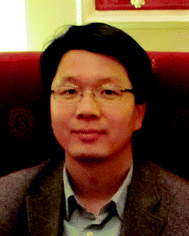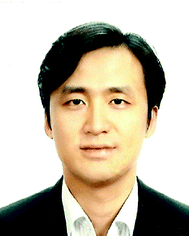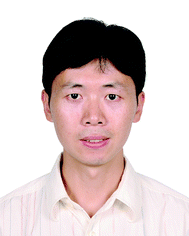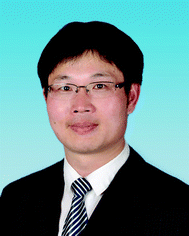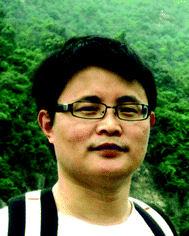DOI: 10.1039/C2LC90102A
(Profile)
Lab Chip, 2012, 12, 3853-3857
Emerging investigators contributors 2012
Amar Basu
Amar Basu received his B.S., M.S., and Ph.D. in electrical engineering (circuits and microsystems concentration), and an MSE in biomedical engineering (biotechnology), all from the University of Michigan-Ann Arbor. His thesis focused on surface tension-based microfluidic manipulation. Currently, Amar is an assistant professor in the electrical and biomedical engineering departments at Wayne State University. In the area of droplet microfluidics, his group has developed techniques for label-free droplet sorting by chemical composition, fractionating samples into droplets, particle concentration in droplets, and thermocapillary droplet trapping using lasers. In the area of bioinstrumentation, his group is developing microelectronic devices for high throughput screening, and distributed biosensors for wireless health monitoring.
Yan Chen
Yan Chen is an Associate Professor at Shenzhen Institutes of Advanced Technology, Chinese Academy of Sciences in the department of biomedical and health engineering. She received an M.S. in Electrical Engineering and a Ph.D. in Bioengineering from California Institute of Technology in 2007 and 2008, respectively. From 2009 to 2010 she worked as a postdoctoral researcher at Princeton University. In 2010, she joined the faculty at Shenzhen Institutes of Advanced Technology, Chinese Academy of Sciences. Dr Chen's research interests are focused on the development of microfluidic systems for single cell analysis, integrated nano-optics for biosensing and advanced nanofabrication for integrated lab-on-chip systems.
Seok Chung
Seok (Sid) Chung is an Associate Professor at the School of Mechanical Engineering at Korea University, Seoul, Korea. He leads a research group working on 3D cell culturing and micro/nano fluidics. He obtained his MS and PhD degree in mechanical engineering from Seoul National University. After five years working for commercialization of microfluidic cell counter at a start-up company (NanoEntek Co.), he worked with professor Roger D. Kamm at MIT as a post-doctoral fellow for four years.
Michael Dickey
Michael D. Dickey received his B.S. in Chemical Engineering (1999) from the Georgia Institute of Technology and a PhD in Chemical Engineering from the University of Texas (2006) under his advisor, Professor C. Grant Willson. He was a postdoctoral fellow in the laboratory of Professor George M. Whitesides at Harvard University (2006–2008). He is currently an assistant professor in Chemical and Biomolecular Engineering at NC State. He has received the NSF CAREER Award, the Sigma Xi Faculty Research Award, the NCSU Outstanding Teacher Award, and the Alcoa Foundation Research Award. His research interests include unconventional fabrication, stretchable electronics, soft materials (polymers, gels, liquid metals) and interfacial phenomena.
Piotr Garstecki
Piotr Garstecki is an Associate Professor at the Institute of Physical Chemistry of the Polish Academy of Science. After obtaining an MSc in Theoretical Physics and a PhD in Chemistry, he served as a postdoctoral fellow in the group of Prof. George Whitesides at Harvard University. Piotr has co-authored more than 70 scientific publications and multiple patent applications in the areas of soft matter systems and microfluidics. He currently leads the research group of Microfluidics and Complex Fluids that has recently acquired the Starting Grant from the European Research Council to focus on the development of automated microfluidic tools for research in biochemistry and microbiology.
Longhua Guo
Dr. Longhua Guo obtained his PhD from the Department of Chemistry, Fuzhou University (China) in June 2009. He worked as a postdoctoral research fellow in Prof. Dong-Hwan Kim’s BioSurface Engineering Lab, School of Chemical and Biomedical engineering, Nanyang Technological University (Singapore) from April 2009 to August 2011. He joined the Department of Chemistry, Fuzhou University (China) as an associate professor in September 2011. His research interests include: nano-optical biosensing devices and nano-optical based modern separation techniques.
Elliot Hui
Elliot Hui received his doctoral training in MEMS under Roger Howe at UC Berkeley, followed by postdoctoral training in tissue engineering under Sangeeta Bhatia at MIT. In 2008, he joined the biomedical engineering faculty at the University of California, Irvine. His research interests include the role of spatial organization in cell–cell signaling; temporal dynamics in cells, tissues, and small animals; and point-of-care diagnostics. To this end, he also pursues the engineering of microfabricated cell culture substrates; dynamically controlled biological microenvironments; and autonomous integrated microfluidics via microfluidic digital logic.
Ryota Iino
Ryota Iino is a Lecturer in the Department of Applied Chemistry at the Graduate School of Engineering, University of Tokyo, Japan. He received his B.E. and M.E. degrees in Chemistry from Kyoto University, Japan in 1995 and 1997, respectively, and his Ph.D. degree in Biophysics from Nagoya University, Japan in 2003. He then extended his research to MEMS and has been developing microdevices for single-molecule and single-cell analysis under optical microscope. His current research interests include operation mechanisms of motor proteins and biomolecular nanomachines, creation of hybrid and artificial nanomotors, and development of ultrasensitive methods for biomedical diagnosis.
Xingyu Jiang
Xingyu Jiang obtained his B.S. at the University of Chicago (1999), followed by an A.M. (2001) and a Ph.D. (2004) from Harvard University (Chemistry), working with Professor George Whitesides on microfluidics and cell patterning. He joined the NCNST in 2005 where he has remained since. Xingyu’s research interests include surface chemistry, microfluidics, micro/nano-fabrication, cell biology, immunoassays, and nanomedicine.
Ali Khademhosseini
Ali Khademhosseini is an Associate Professor at Harvard-MIT Division of Health Sciences and Technology, Brigham and Women’s Hospital and Harvard Medical School, as well as an Associate Faculty at the Wyss Institute for Biologically Inspired Engineering and a Junior PI at Japan’s World Premier International-Advanced Institute for Materials Research at Tohoku University, where he directs a satellite laboratory. He is an author on over 200 peer-reviewed journal papers and 40 book chapters. His H-index is 43 (>7000 citations). He received his Ph.D. in bioengineering from MIT (2005), and MASc (2001) and BASc (1999) degrees from the University of Toronto, both in chemical engineering.
Taesung Kim
Taesung Kim obtained his B.S. and M.S. degrees from Seoul National University and pursued his Ph.D degree at the University of Michigan in 2006, all in the mechanical engineering department. After being a research fellow at the University of California at Berkeley and LBNL (JBEI), he started his independent research career as an assistant professor at Ulsan National Institute of Science and Technology in 2009 (http://ufnm.unist.ac.kr). His research interests include micro-/nanofluidics, electrokinetics including numerical simulations, nanobiosensors and inkjet printing based micro-/nanofabrication. Currently, he focuses on bioreactors, high-throughput screening and evolutionary adaptation devices and chemical/mechanical interfaces for synthetically engineered bacterial cells.
Logan Liu
Dr. Logan Liu obtained his Ph.D. degree in Bioengineering from the University of California-Berkeley and UC-San Francisco in 2006. After two years postdoctoral training in Lawrence Livermore National Laboratory, in 2008 Dr. Liu joined the University of Illinois at Urbana-Champaign as an assistant professor in the Department of Electrical and Computer Engineering and Department of Bioengineering. Dr. Liu has published over 60 journal publications, conference abstracts and several book chapters. Dr. Liu’ research focuses on designing and developing integrative bionano and microfluidic technologies and devices for the applications of advanced nanomanufacturing, bioimaging, cancer diagnostics and therapy, environmental sensing and mobile health.
Kwang Oh
Kwang W. Oh is an Associate Professor of Electrical Engineering at SUNY at Buffalo where he leads the Sensors and MicroActuators Learning Laboratory (http://SMALL.buffalo.edu). He earned his PhD degree from the University of Cincinnati in 2001. Prior to joining SUNY at Buffalo in 2006, he worked at Samsung Advanced Institute of Technology (SAIT), Korea, where he developed micro PCR and LOC platforms for clinical diagnostics. He has authored over 90 technical publications and holds 18 US patents. He is serving as a co-chair of the symposium section of Micro and Nano Fluidics at the NSTI NanoTech Conference. His current research focuses on droplet-based microfluidics, microfluidic networks, 3D cell culture platforms, micro valves and actuators, and microfluidic applications.
Sang-Hyun Oh
Sang-Hyun Oh received his B.S. in Physics from KAIST, Korea, and Ph.D. in Applied Physics from Stanford University. After postdoctoral research at Bell Labs and UCSB, he is currently an Associate Professor of Electrical and Computer Engineering at the University of Minnesota, Twin Cities. He also holds the position of WCU Professor of Biophysics and Chemical Biology at Seoul National University, Korea. Prof. Oh’s research aims to integrate nanostructures, plasmonics, and biomolecules in a micro/nanofluidic platform. He has received the DARPA Young Faculty Award, ONR Young Investigator Award, NSF CAREER Award, ACS PRF Doctoral New Investigator Award, and 3M Faculty Award.
Tae Seok Seo
Tae Seok Seo is an Associate Professor in the Department of Chemical and Biomolecular Engineering at Korea Advanced Institute of Science and Technology (KAIST). Before joining KAIST as a faculty member in 2007, Dr Seo was a Postdoctoral fellow at the University of California, Berkeley in the lab of Dr Richard Mathies. His research interests are in developing a total integrated genetic analysis microsystem, a portable nanobiosensor, high-throughput cell-based assay, and nanoscale chemical synthesis on a chip. He earned his Ph.D. in Chemical Engineering from Columbia University in 2004, and his M.S. at KAIST and B.S. at Seoul National University.
Yi-Chung Tung
Yi-Chung Tung is an Assistant Research Fellow at the Research Center for Applied Sciences (RCAS) at Academia Sinica, Taipei, Taiwan. Before joining Academia Sinica, he was a Postdoctoral Research Fellow in the Department of Biomedical Engineering at the University of Michigan, Ann Arbor for three years. He received his Ph.D. degree in Mechanical Engineering from the University of Michigan, Ann Arbor in 2005, and his B.S. and M.S. degrees in Mechanical Engineering from National Taiwan University, Taipei, Taiwan, in 1996 and 1998, respectively. His research interests include developing microfluidic devices to mimic physiological microenvironments for in vitro cell culture.
Thomas Ward
Thomas Ward received his BS (1998) and MS (2001) degrees in Chemical Engineering from the Missouri University of Science and Technology and Stanford University, respectively, and a PhD in Mechanical Engineering (2003) from UCSB under his advisor, Professor G. M. "Bud" Homsy. He was a postdoctoral fellow in the laboratories of Professor Howard Stone at Harvard University (2003–2005) and Professor Andrea Bertozzi at UCLA (2005–2008). He was an assistant professor of Mechanical and Aerospace Engineering at NC State University (2008–2012) before accepting an Aerospace Engineering position at Iowa State University (2012). His research interests include fluid mechanics and heat transfer.
Jianhong Xu
Jianhong Xu received his B.Sc. and Ph.D. at Tsinghua University in 2002 and 2007 respectively. He continued his research at Tsinghua University as a postdoctor after graduation. He finished the postdoctoral program in May 2009, and became a formal member of the Department of Chemical Engineering, Tsinghua University, China. He was promoted to associate professor in December 2010. At present, his research areas are focusing on the multiphase microfluidics and functional materials synthesis. He has more than 80 journal published papers. His Ph.D thesis was elected as the National Excellent Doctoral Dissertation of PR China in 2009.
Chaoyong Yang
Dr. Chaoyong James Yang received his B.S. (1998) and M.S. (2001) from Xiamen University, China. He studied for his Ph.D. in the Department of Chemistry at the University of Florida from 2001 to 2006. After completing his PhD dissertation, he conducted his postdoctoral studies at the University of California, Berkeley. In 2008, he became a faculty member of Xiamen University and now is the Lu Jiaxi Professor of Chemistry in the Department of Chemical Biology at Xiamen University. His current research is particularly focused on molecular engineering, high throughput evolution, and microfluidics.
Xu-Ming Zhang
X. M. Zhang received his BEng degree in Mechanical Engineering from the University of Science & Technology of China (USTC) in 1994, two M.Eng. degrees from Shanghai Institute of Optics and Fine Mechanics (SIOFM) in Optical Engineering in 1997 and from National University of Singapore (NUS) in Mechanical Engineering in 2000, respectively. Finally, he obtained his Ph.D. degree from Nanyang Technological University (NTU) in Electrical & Electronic Engineering in 2006. He took up an assistant professor position in 2009 and has since stayed with Department of Applied Physics, Hong Kong Polytechnic University. His research focuses mainly on microfluidics, photocatalysis, fiber sensors, and nanophotonics.
Yong-Lai Zhang
Yong-Lai Zhang received his PhD (2009) in chemistry from Jilin University, China. After that, he joined the faculty at the State Key Laboratory on Integrated Optoelectronics, College of Electronic Science and Engineering, Jilin University. He had worked as a research professor in Yonsei University, Korea (2011). After that, he was awarded a “Hong Kong Scholar” postdoctoral fellow and worked at Center of Super Diamond and Advanced Films (COSDAF), City University of Hong Kong. His research interests include multifunction integration of lab-on-a-chip systems by using novel laser micronanofabrication techniques, microfluidic reactors, on-chip catalysis and synthesis.
| This journal is © The Royal Society of Chemistry 2012 |

